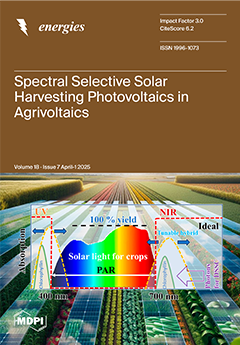Open AccessArticle
An Investigative Study on Mixed Waste Feedstock-Derived Biochar as Active Electrode Material for Supercapacitor Applications
by
Sudhakar Pabba, Rajkamal Balu, Arun Krishna Vuppaladadiyam, Ganesh Veluswamy, Manoj Kumar Jena, Ibrahim Gbolahan Hakeem, Namita Roy Choudhury, Abhishek Sharma, Michael Thomas, Aravind Surapaneni, Savankumar Patel and Kalpit Shah
Cited by 3 | Viewed by 1311
Abstract
This work demonstrates the feasibility of using biochars derived from a variety of waste feedstocks, such as food organics and garden organics (FOGOs), garden organics (GOs), and biosolids (BSs), provided by Barwon Water (BW) and South East Water (SEW), as active electrode material
[...] Read more.
This work demonstrates the feasibility of using biochars derived from a variety of waste feedstocks, such as food organics and garden organics (FOGOs), garden organics (GOs), and biosolids (BSs), provided by Barwon Water (BW) and South East Water (SEW), as active electrode material for supercapacitor application. Four different biochars were produced by the co-pyrolysis of pre-treated mixed waste feedstocks, which were fabricated into a two-electrode symmetric supercapacitor set-up to evaluate their energy storage potential. Two different approaches, (i) carbon nanoparticle coating/modification and (ii) thermochemical activation, were employed to improve the electrochemical properties of the biochars. Potassium hydroxide-activated biochar derived from BW’s triple waste feedstock mixture (comprising 70% GOs, 20% FOGOs, and 10% BSs) demonstrated the highest specific capacitance (30.33 F/g at 0.1 A/g), energy density (4.21 Wh/kg), and power density (2.15 kW/kg) among the tested samples. Such waste-derived biochar offers several benefits for energy storage, including cost-efficiency and sustainable alternatives to traditional electrode materials. The biochar’s electrochemical performance can be further improved by improving the feedstock quality by different pre-treatments.
Full article
►▼
Show Figures





